
Tony Hawk's Pro Skater, released as Tony Hawk's Skateboarding in the UK, Australia, New Zealand, and parts of Europe, is a 1999 skateboarding video game developed by Neversoft and published by Activision. It is the first installment in the Tony Hawk's series. It was released for the PlayStation on September 29, 1999 and was later ported to the Nintendo 64, Game Boy Color, Dreamcast, and N-Gage.

F-Zero X is a futuristic racing video game for the Nintendo 64 console. Developed and published by Nintendo, it was released in Japan, North America, and Europe in 1998. In 2000, the Expansion Kit was released in Japan, including a track and vehicle editor. The original game was ported in 2004 to the iQue Player in China. It had Virtual Console re-releases on the Wii in 2007 and the Wii U around nine years later. On March 11, 2022, the game was re-released on Nintendo Switch Online + Expansion Pack, featuring online multiplayer.

Excitebike is a motocross racing video game developed and published by Nintendo. In Japan, it was released for the Famicom in 1984 and then ported to arcades as VS. Excitebike for the Nintendo VS. System later that year. In North America, it was initially released for arcades in 1985 and then as a launch game for the Nintendo Entertainment System later that year, becoming one of the best-selling games on the console. It is the first game in the Excite series.

Tony Hawk's Pro Skater 2 is a 2000 skateboarding video game developed by Neversoft and published by Activision. It is the second installment in the Tony Hawk's series of sports games and was released for the PlayStation in 2000, with subsequent ports to Microsoft Windows, Game Boy Color, and Dreamcast the same year. In 2001, the game was ported to the Mac OS, Game Boy Advance, Nintendo 64, and Xbox. The game was later ported to Windows Mobile and Windows Phone devices in 2006 and to iOS devices in 2010.
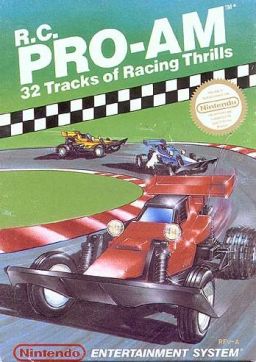
R.C. Pro-Am is a racing video game developed by Rare and published by Nintendo for the Nintendo Entertainment System. It was released in North America in February 1988, and then in Europe on April 15. Presented in an overhead isometric perspective, a single player races a radio-controlled car around a series of tracks in vehicular combat. Each track qualifies its top three racers for the next track. Collectible power-up items improve performance, hazards include rain puddles and oil slicks, and missiles and bombs can temporarily disable opponents. Originally titled Pro Am Racing, it was ported to the Sega Genesis in 1992 as Championship Pro-Am, an enhanced remake with enhanced graphics and additional features. R.C. Pro-Am spawned two sequels: Super R.C. Pro-Am in 1991, and R.C. Pro-Am II in 1992.
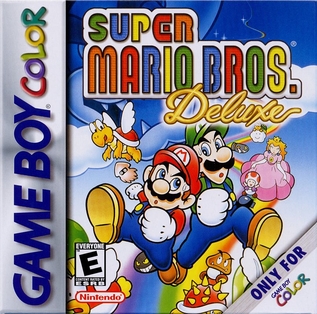
Super Mario Bros. Deluxe is a 1999 video game developed by Nintendo for the Game Boy Color as a version of the 1985 game Super Mario Bros. for the NES. The game contains a largely unmodified version of Super Mario Bros. with an unlockable version of the 1986 Japanese sequel Super Mario Bros.: The Lost Levels. In addition, the game includes several new gameplay features, such as a single and two-player race mode, a challenge mode for individual levels, and miscellaneous toys and collectibles, some of which utilize the functionality of the Game Boy Printer.

1080° Snowboarding is a snowboarding video game developed and published by Nintendo for the Nintendo 64 in 1998. In the game, the player controls one of five snowboarders from a third-person perspective, using a combination of buttons to jump and perform tricks over eight levels.

Mario's Tennis is a 1995 sports game developed by Nintendo for the Virtual Boy video game console. The game was released at the launch of the Virtual Boy, and later as a pack-in game in North America.
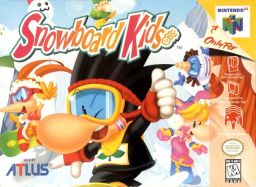
Snowboard Kids, is a snowboarding video game for the Nintendo 64. It was developed by Racdym and published by Atlus. Many reviewers compared its style to that of the Mario Kart series. An enhanced port, Snowboard Kids Plus, was released in Japan in January 1999 for the PlayStation.

Digimon Racing is a racing video game developed by Griptonite Games and published by Bandai for the Game Boy Advance. Part of the Digimon media franchise and video game series, it utilizes Digimon's characters and elements. Its gameplay largely resembles that of traditional racing games, but also utilizes elements of kart racing and action games. Its eleven playable characters can be increased to over 40 via Digivolution.

Lego Racers is a Lego-themed racing video game developed by High Voltage Software and published by Lego Media in 1999.
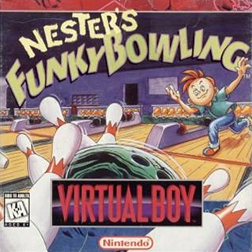
Nester's Funky Bowling is a bowling video game developed by Saffire and published by Nintendo for the Virtual Boy console. It was only released in North America on February 1996, and was the second-to-last game released for the system before it was discontinued. Players control Nester, a character from the Nintendo Power comics, or his twin sister Hester, as they compete to see who is the superior bowler. It features standard bowling mechanics and rules, and has three modes of play - Bowling, Challenge, and Practice, all three supporting one or two players.

Micro Machines V4 is a racing video game developed by Supersonic Software and published by Codemasters for Microsoft Windows, PlayStation 2, PlayStation Portable and Nintendo DS.

Moto Racer Advance is a motocross racing game developed by Adeline Software International, produced by Delphine Software International and published by Ubisoft for the Game Boy Advance. It was released in 2002 in PAL regions on October 4 and in North America on December 4. It is part of the Moto Racer series and was the last game to be developed by Adeline Software and also the last with any involvement from Delphine Software.

Antz Racing is a 2001 video game for the Game Boy Color, developed by RFX Interactive and published by Light and Shadow Production with Acclaim Entertainment co-publishing in North America and Electronic Arts co-publishing in Europe. The game is a kart racing game based on the 1998 film Antz.

Tarzan is a 1999 platform game based on the 1999 film of the same name. Versions were released in North America for the Game Boy Color on June 28, 1999, PlayStation and Microsoft Windows on June 30, 1999, and Nintendo 64 in February 15, 2000. In 2012, the PlayStation version was made available on the PlayStation Store for PlayStation Vita.
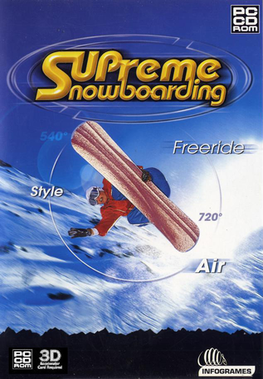
Supreme Snowboarding is a snowboarding video game created by Housemarque for Microsoft Windows with a Game Boy Color version by Software Creations in 1999. It was one of the first snowboarding games for Windows to take full advantage of 3D graphics cards that were becoming the norm in the late 1990s. Over 1.5 million units were sold worldwide, allowing Supreme Snowboarding to become the first hit title in Finnish game development. The game received positive critical reception, as well as acclaim for having one of the best visuals of its time, though its lack of content and replay value was sometimes criticized.

Armada F/X Racers is a 2000 video game for the Game Boy Color, developed by Metropolis Digital Inc. and published by Metro3D. The game is a futuristic-themed racing game based on the 1999 Dreamcast game Armada.
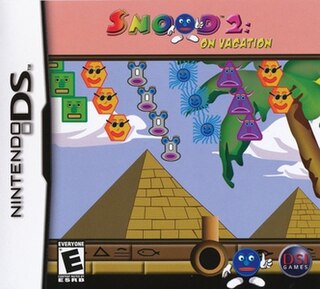
Snood 2: On Vacation is a 2005 puzzle video game developed by Gravity-i and published by Destination Software in the United States for the Game Boy Advance and Nintendo DS and Cybiko for mobile phones. Gameplay consists of clearing patterns of 'snoods' by matching pieces of the same color, in a manner similar to Puzzle Bobble or Bust-a-Move. The game is a sequel to the 1996 title Snood, ported to the Game Boy Advance in 2001. Upon release, Snood 2 met a mixed reception from critics, with praise directed to the game's variety of modes and criticism of its presentation and lack of originality.
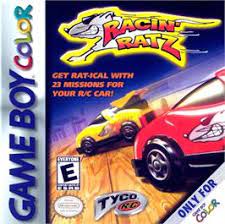
Tyco R/C Racin' Ratz is a 2000 video game developed by American studio KnowWonder and published by Mattel Interactive for the Game Boy Color. The game is a licensed title based upon remote control toy cars of the same name produced by Mattel, and was announced at E3 2000. Upon release, Racin' Ratz received average reviews, with critics noting that the game's design had greater similarities to a puzzle title than a racing title, and critiquing the graphics.





















